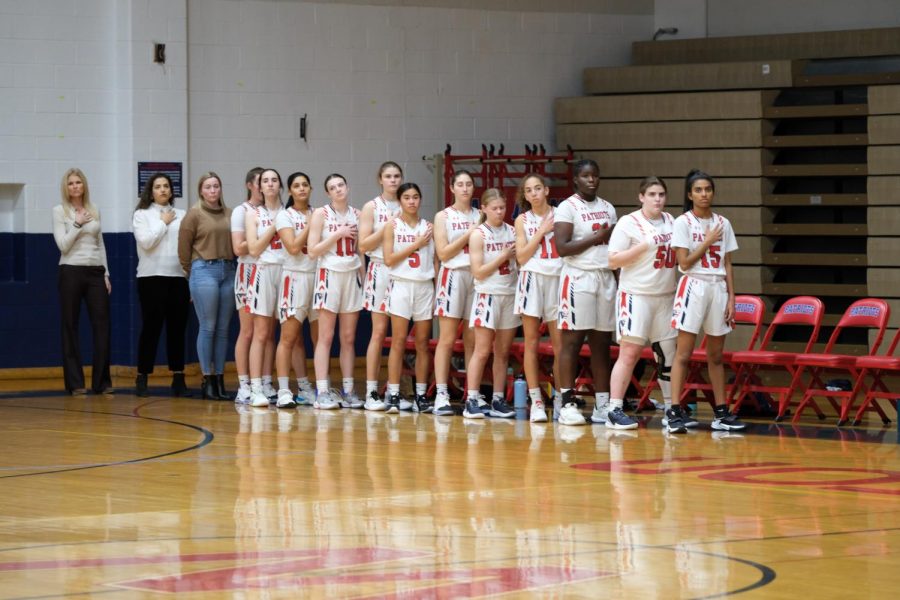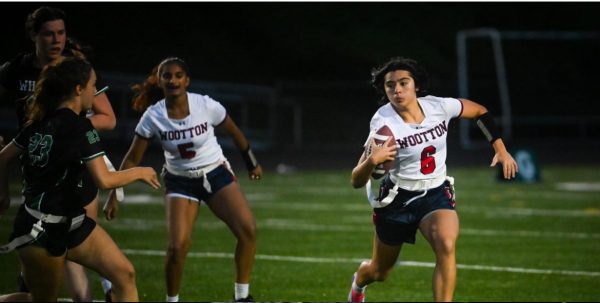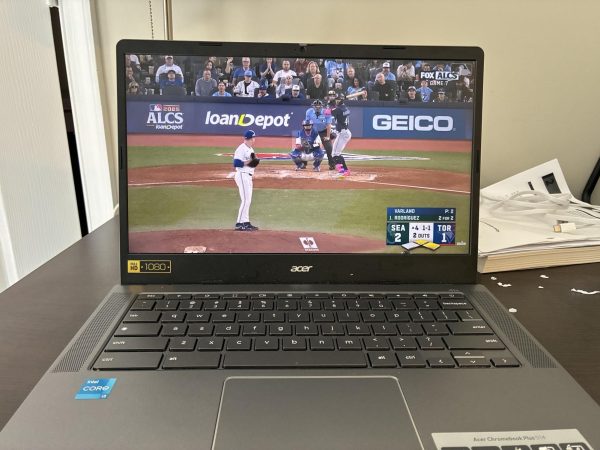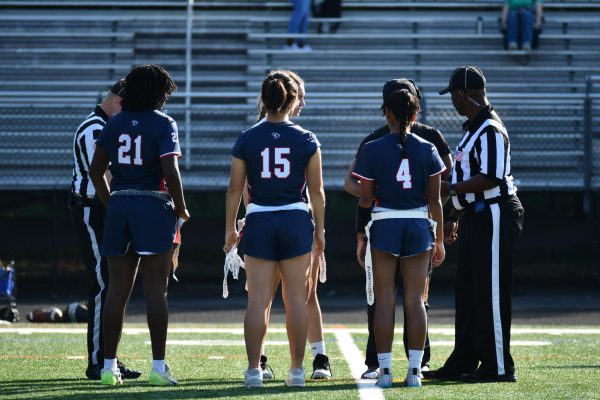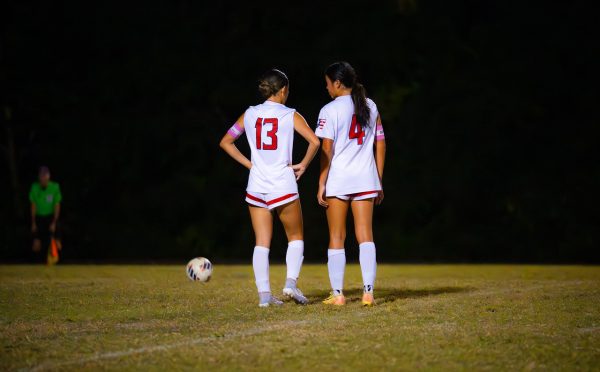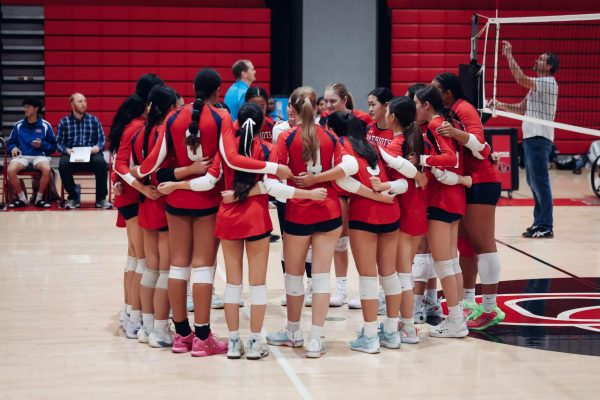Is funding equitable for boys’, girls’ sports?
Photo courtesy Kaitlin Mariani
The girls’ varsity basketball game stands for the Pledge of Allegiance before a game.
Female basketball players run around the locker room getting ready for picture day. The junior varsity players stand together deciding how to fix their uniform dilemma. The uniforms are huge. The shirts are loose and long and the shorts run past their knees. One girl jokes and says they look like Adam Sandler and the girls start waddling around the room mimicking him. They then roll their shorts three to five times just to make sure they fit. What should have been a moment of team pride became an embarrassing memory just because of the uniforms.
The girls’ basketball team sees inequities in their uniforms compared to the boys’ teams because the boys appear to have nicer uniforms, though Athletic Specialist Alton Lightsey says otherwise.
Title IX is a federal civil rights law that prohibits sex discrimination in any school environment. Despite these federal laws prohibiting sex discrimination in schools including sports, girl athletes, specifically JV basketball players, have seen inequities. “I don’t think girls’ and boys’ sports are treated equally,” sophomore JV athlete Maddie Matthews said.
Sports uniforms are funded by the school but coaches of the teams are responsible for ordering the new uniforms. According to Lightsey, there is a rotation in which every five years teams can order new jerseys. Head coach of girls’ varsity basketball, Maggie Dyer, lets her players pick their uniforms that they’ll use for the next year on the team. After varsity gets new uniforms, Dyer passes them down to junior varsity, meaning that, “the uniforms are way too big for most players,” Matthews said.
Even though female players feel as though the boys’ jerseys are better, it’s the coaches decision on styles and sizes. “I just pay for the jersey,” Lightsey said.
Dyer said that because the uniforms are used for the next five years and only 15 jerseys can be bought, teams typically need to buy a large variety of sizes to fit players for the next few years. But uniforms are not the only difference between girls’ and boys’ sports. Girl athletes feel overlooked because of the minimal attendance they get at their games from the school and students.
Although Lightsey said both girls’ and boys’ teams are advertised equally, “It just seems like since girls’ sports usually don’t get as many people to go watch the games, the school doesn’t really put as much thought into them,” freshman JV basketball player Helen Manolis said.
Despite these inequities that girls players have seen, Lightsey said that both girls’ and boys’ teams are treated equally. He said that all funds given to a boys’ team must be matched and given to the girls’ team as well. For time in the main gym, both coaches coordinate a schedule revolving around games, but according to Lightsey the day before a game the team will always get the upper gym.
For resources ranging from basketballs to soccer goals , “everything will be split,” Lightsey said.
In the stands at games it is mostly family members going to watch their players, but usually there are few students in the crowd coming to support their girls’ teams. “It feels wrong and kind of sad to be a girl playing for your school when no one really cares about it,” Manolis said.
Your donation will support the student journalists of Thomas S. Wootton High School. Your contribution will allow us to purchase equipment and cover our annual website hosting costs.

Senior Emory Scofield is an editor-in-chief in her fourth year at Common Sense. In her free time, she enjoys listening to music, playing lacrosse, biking,...


